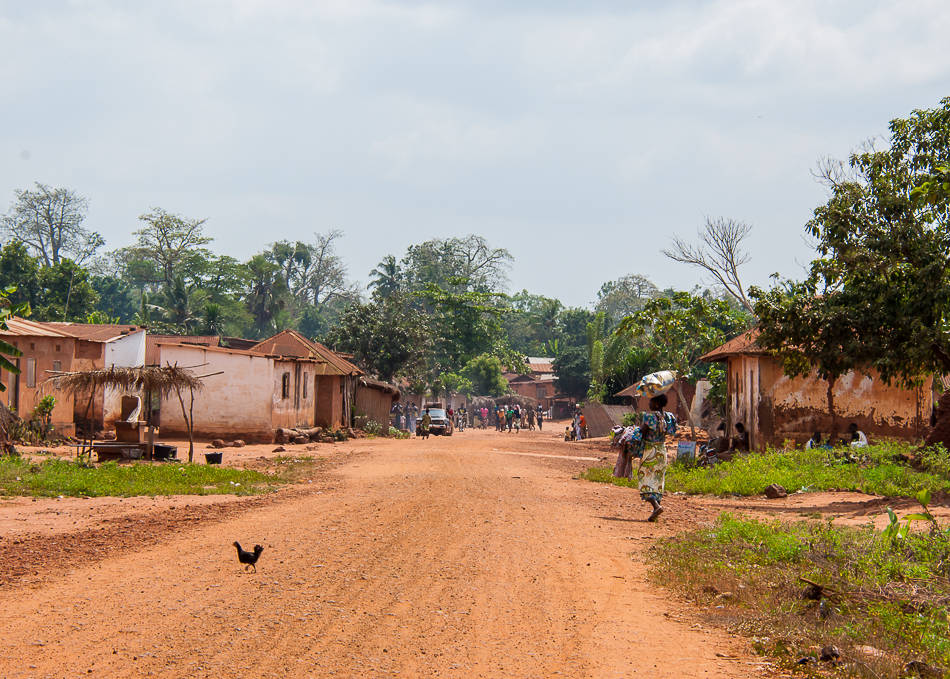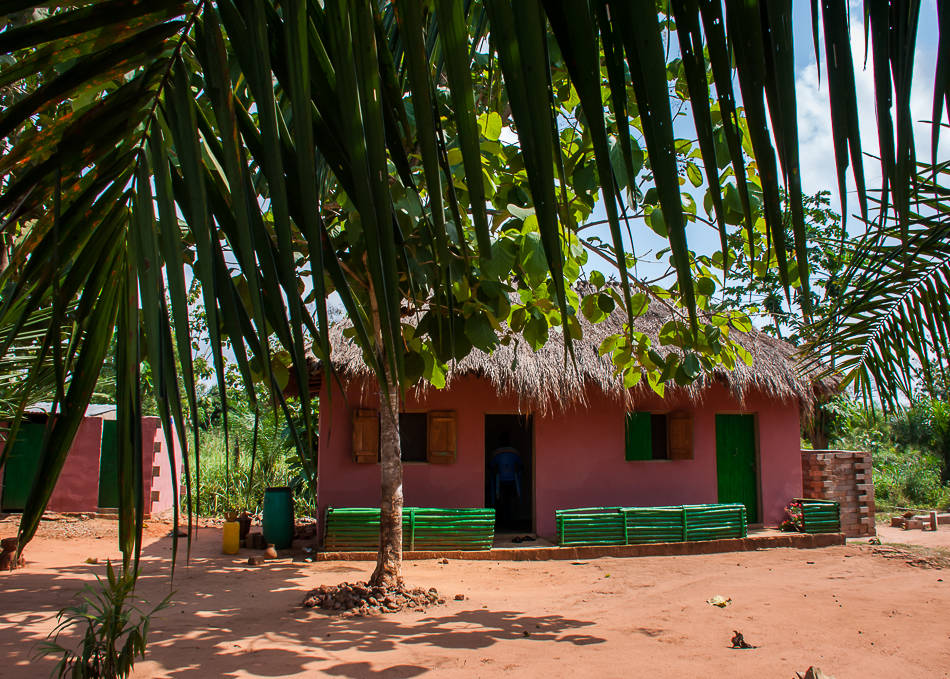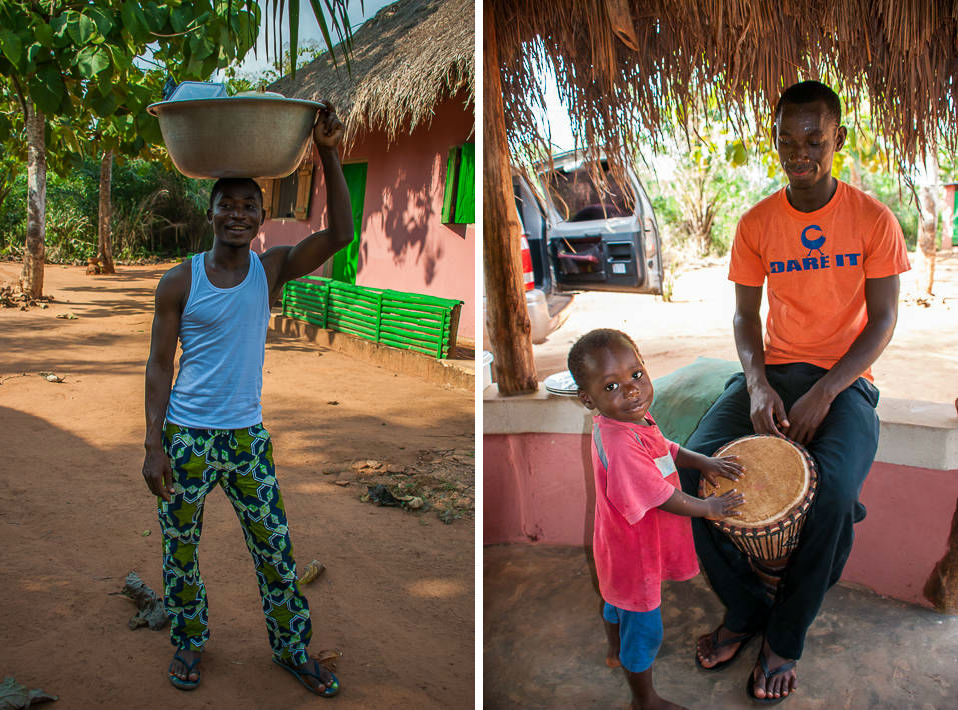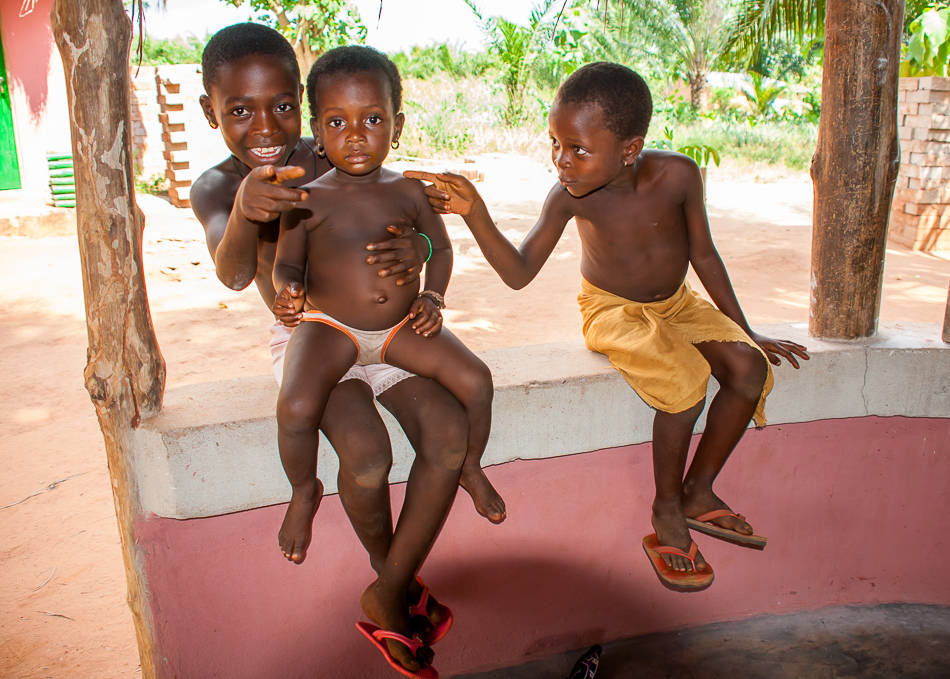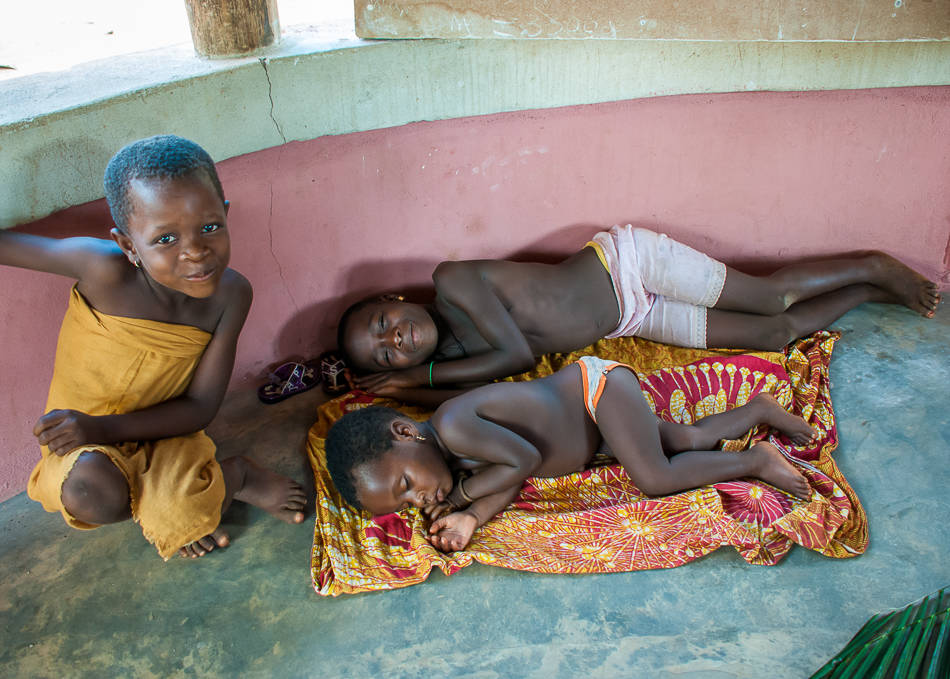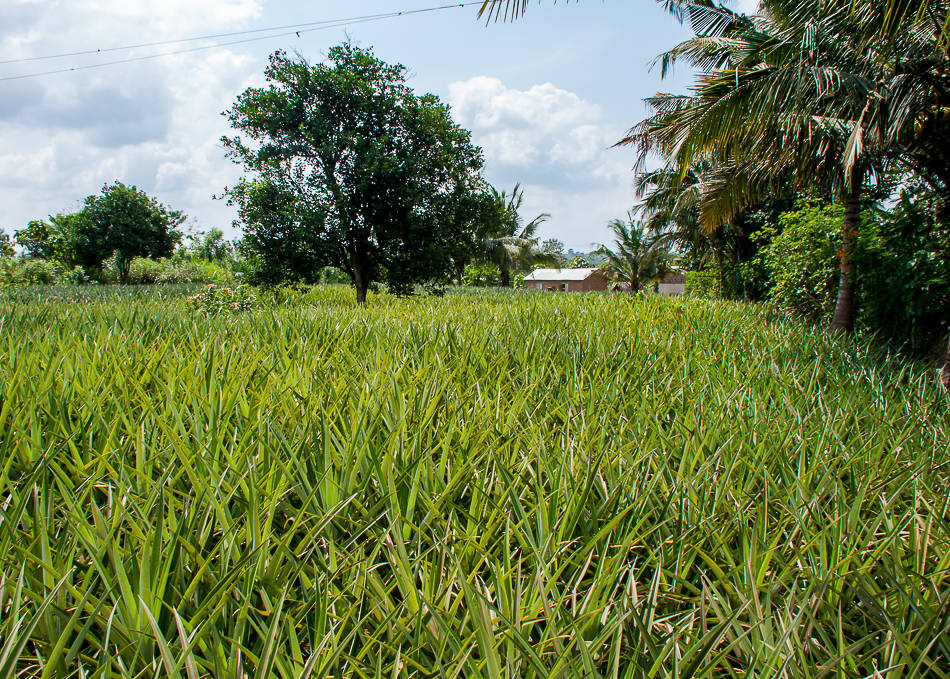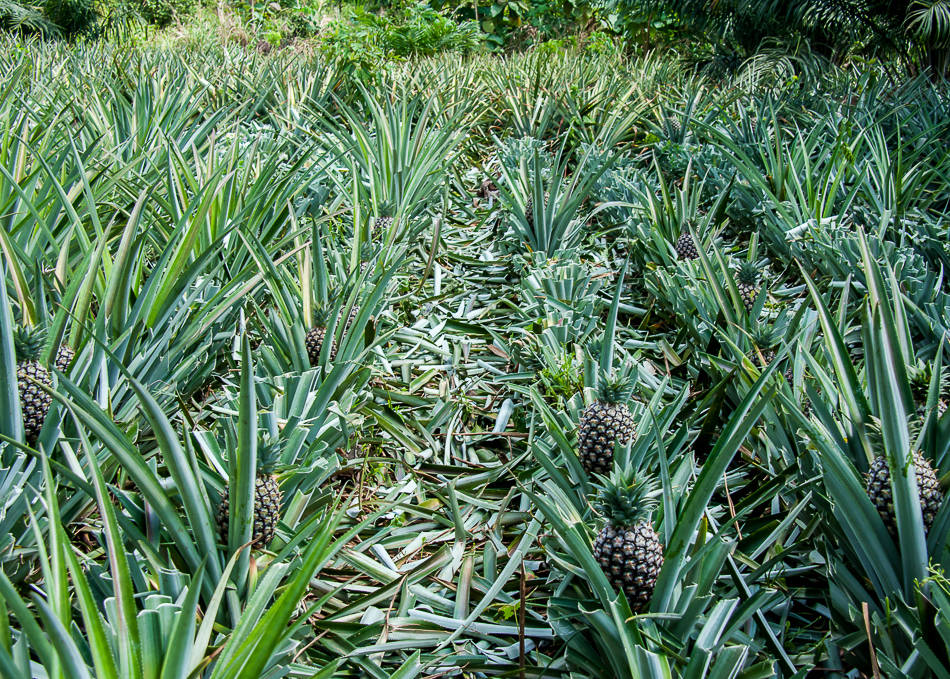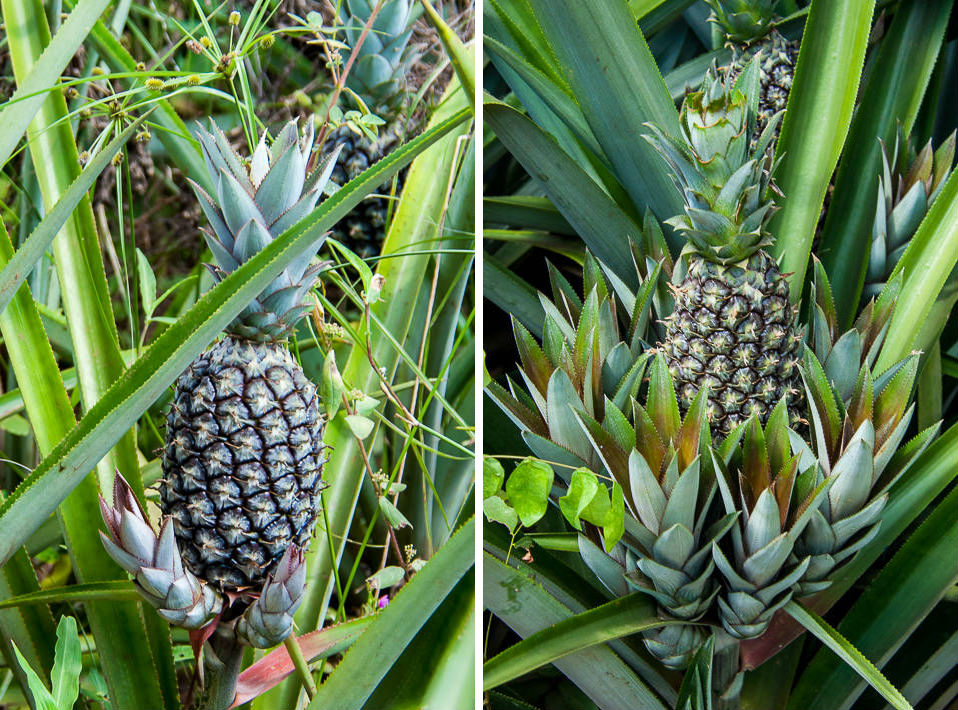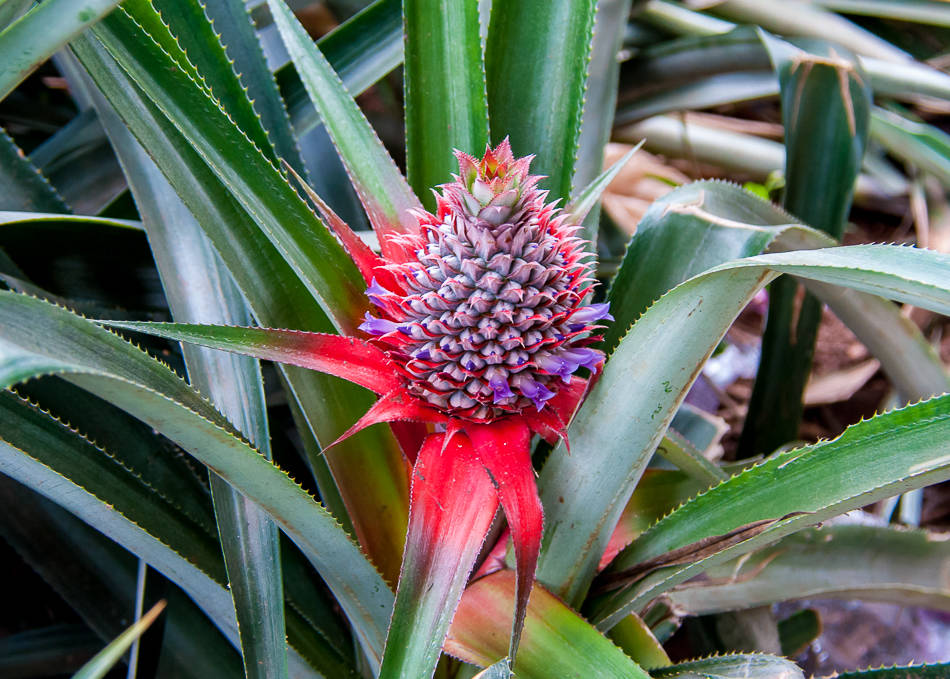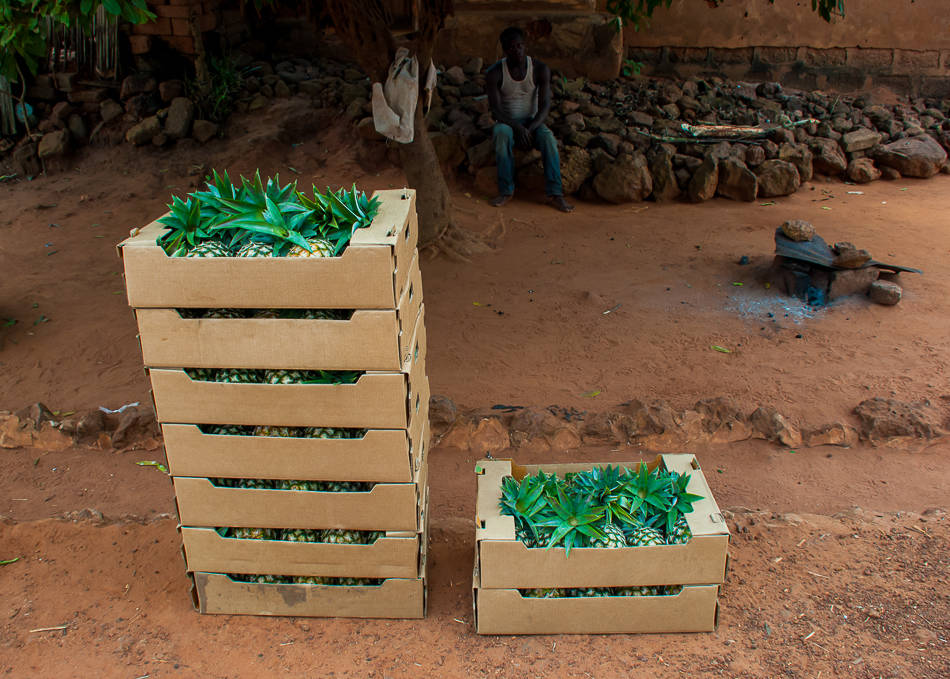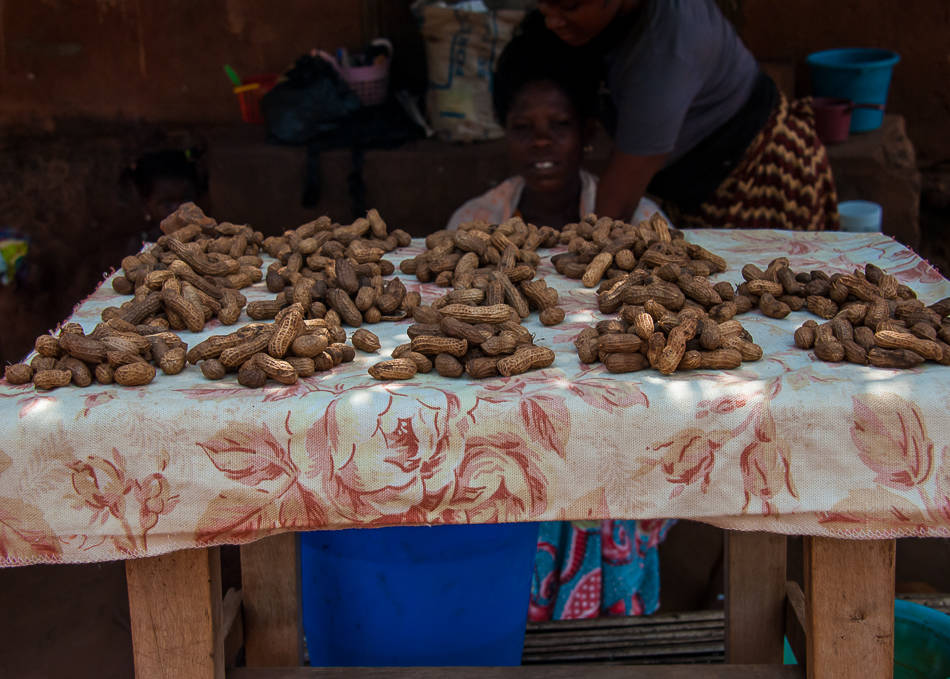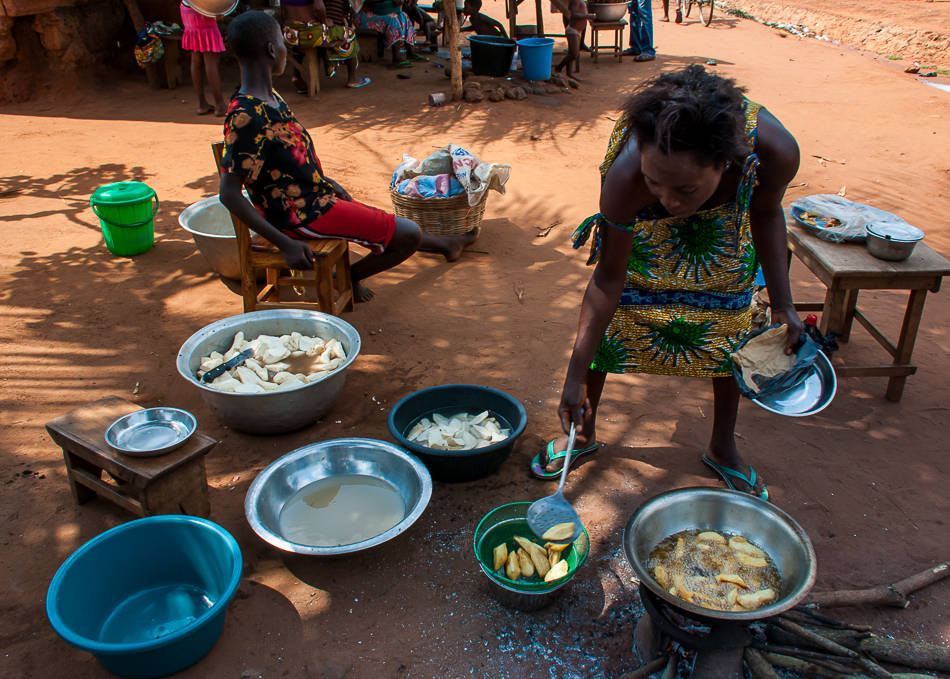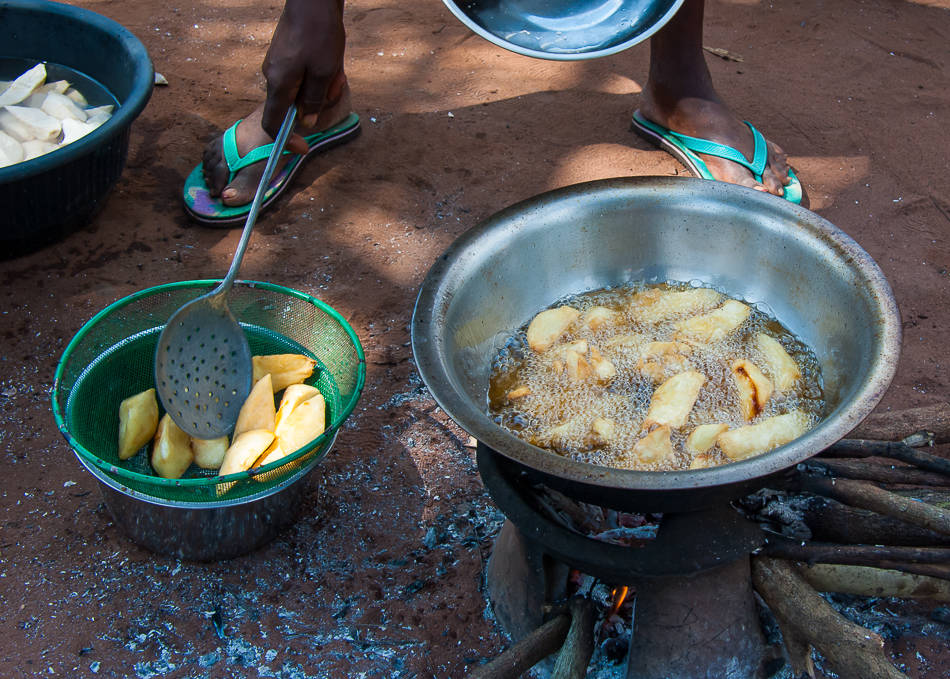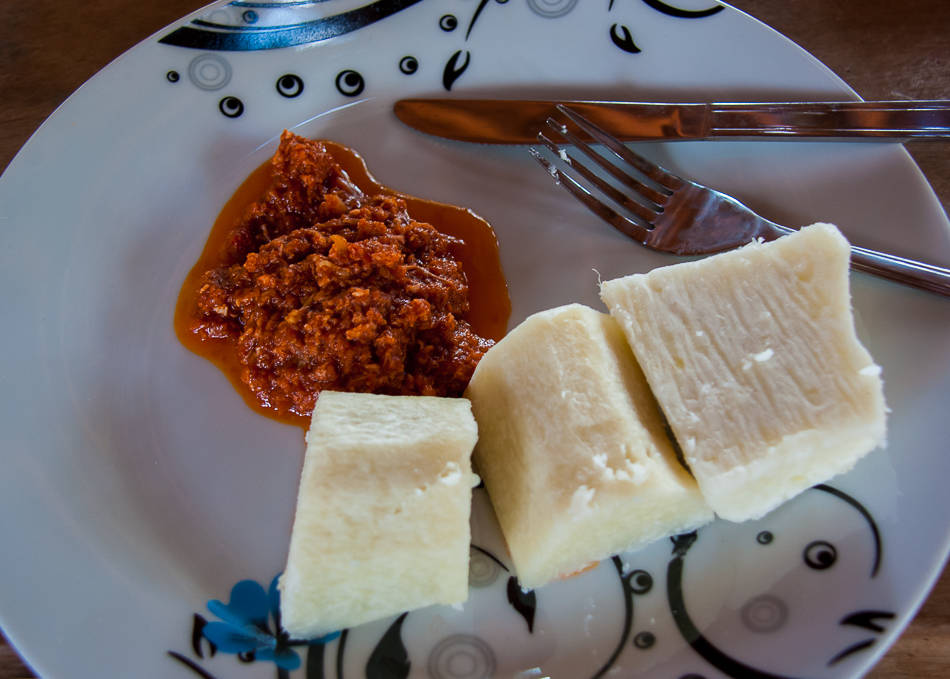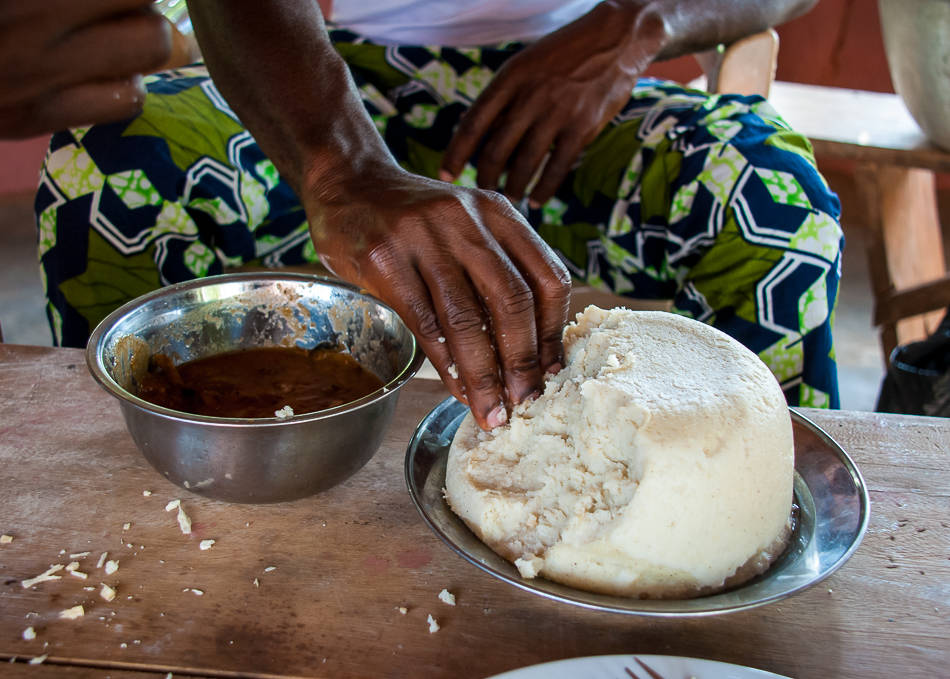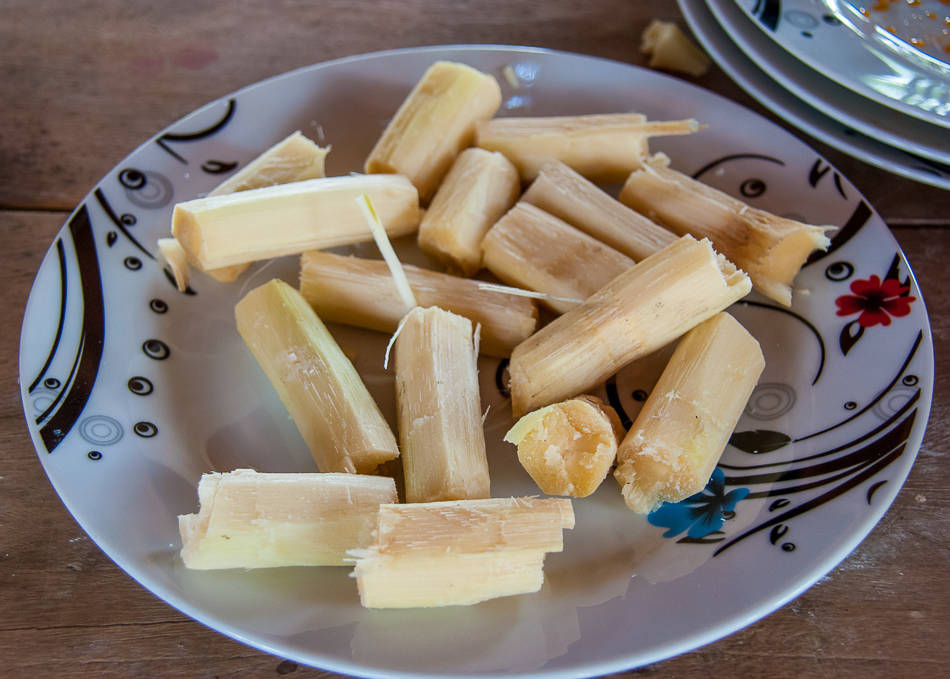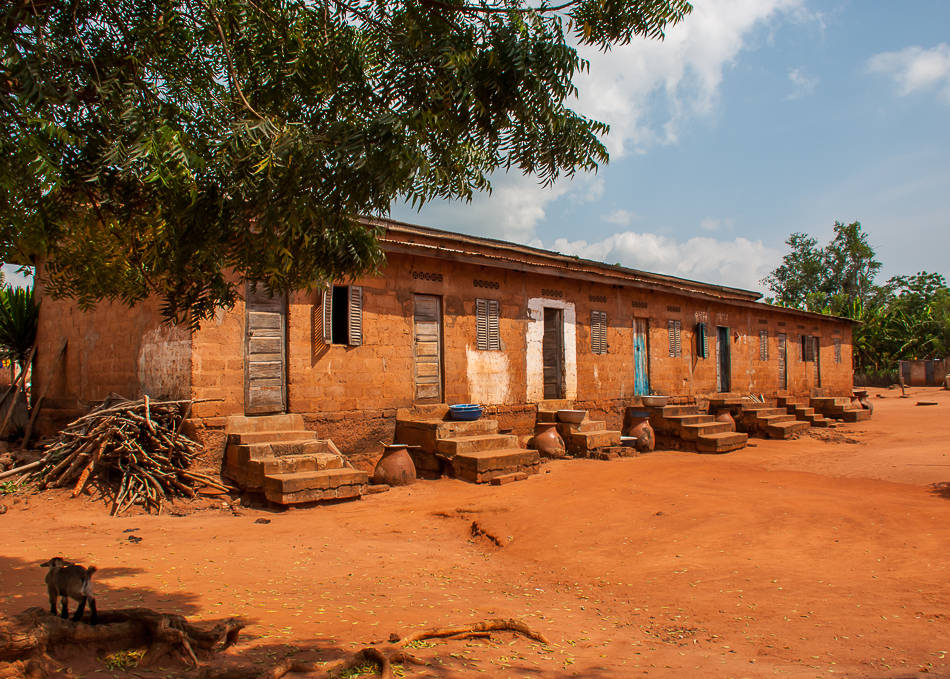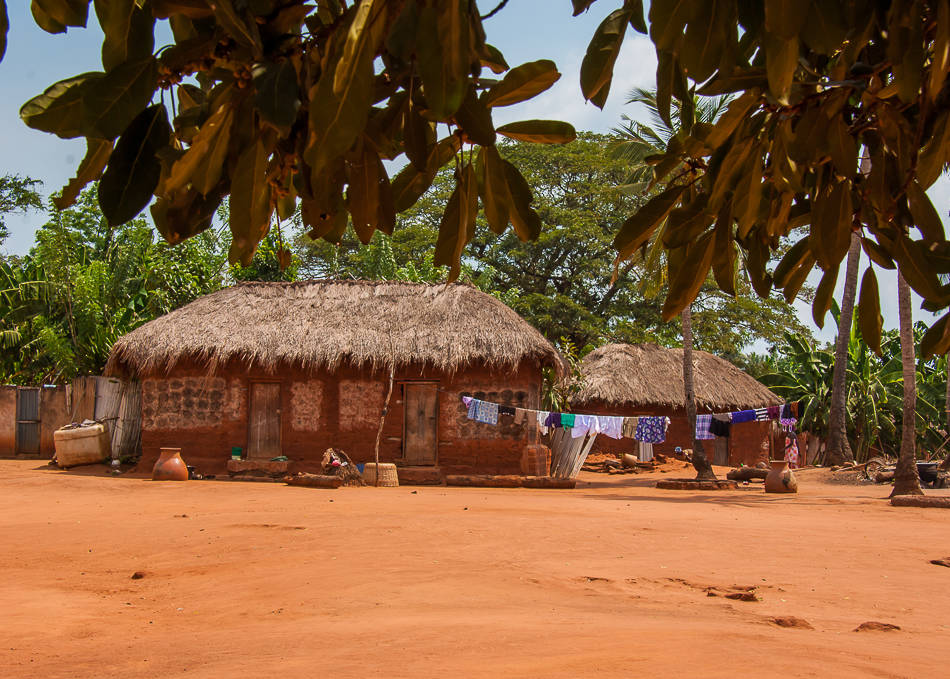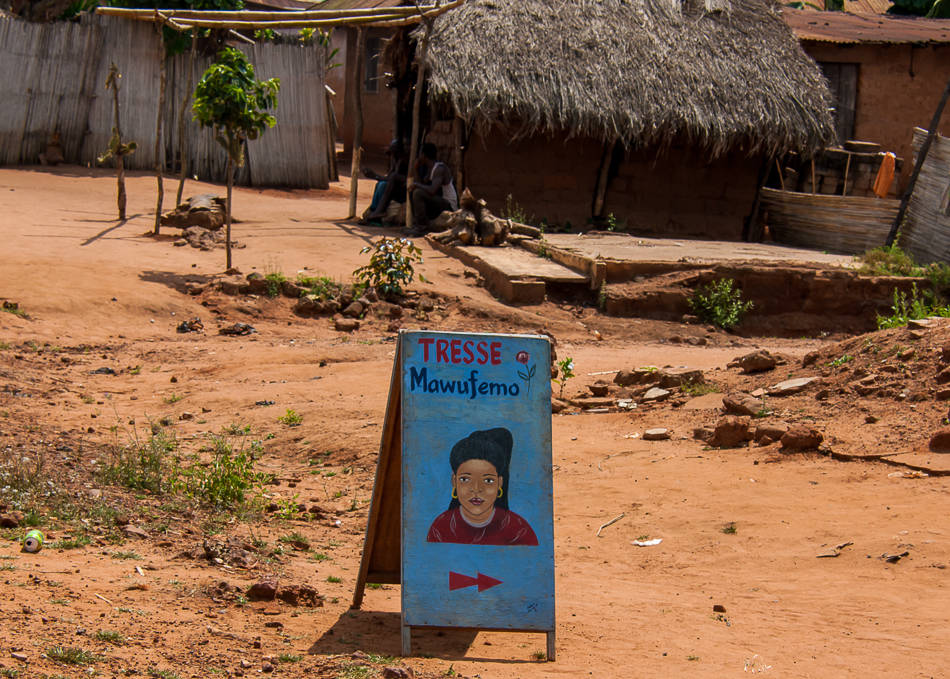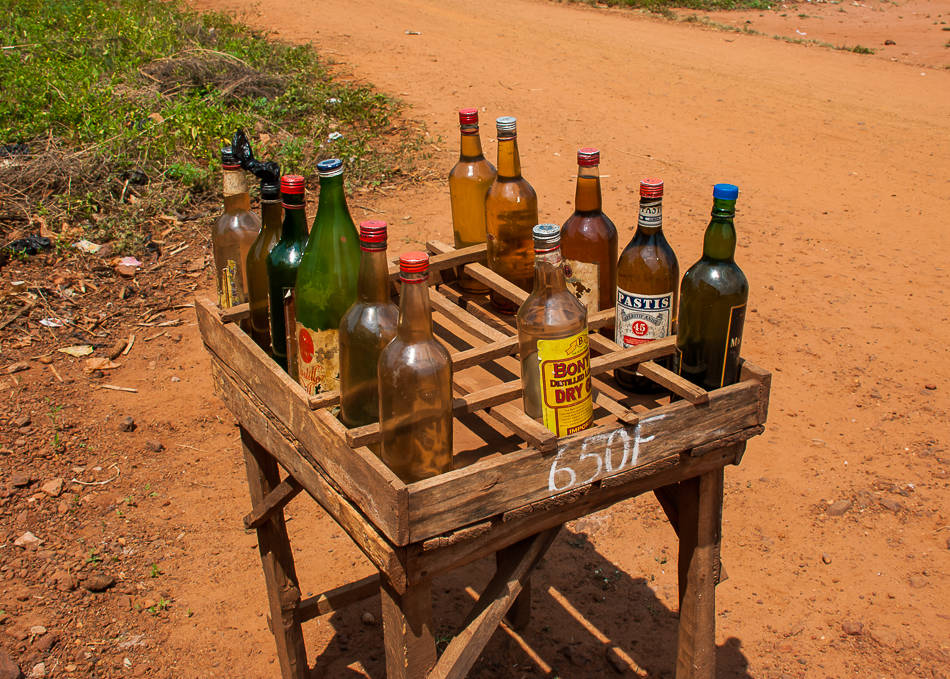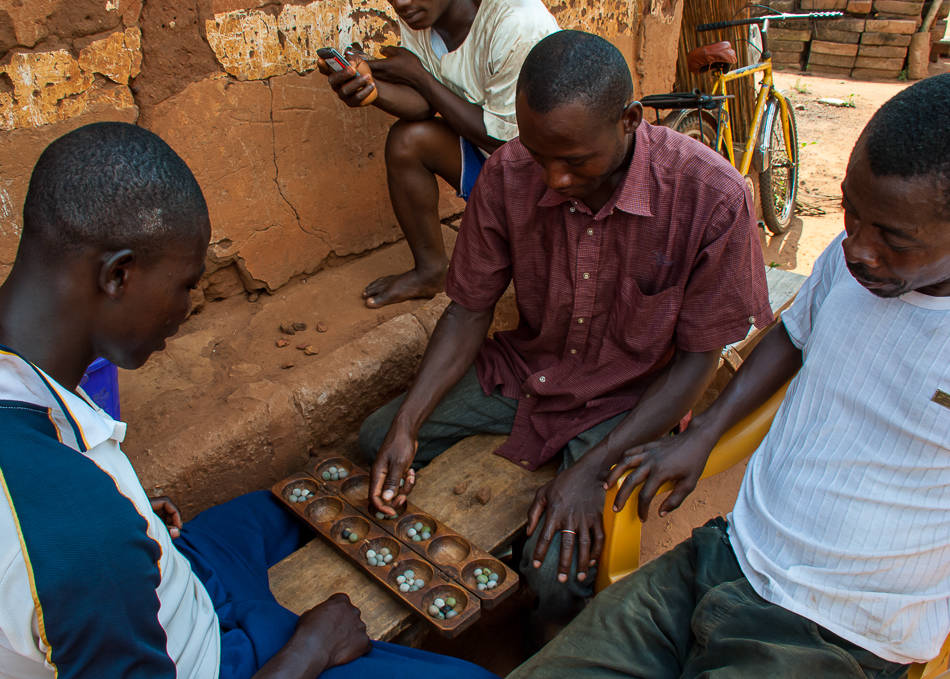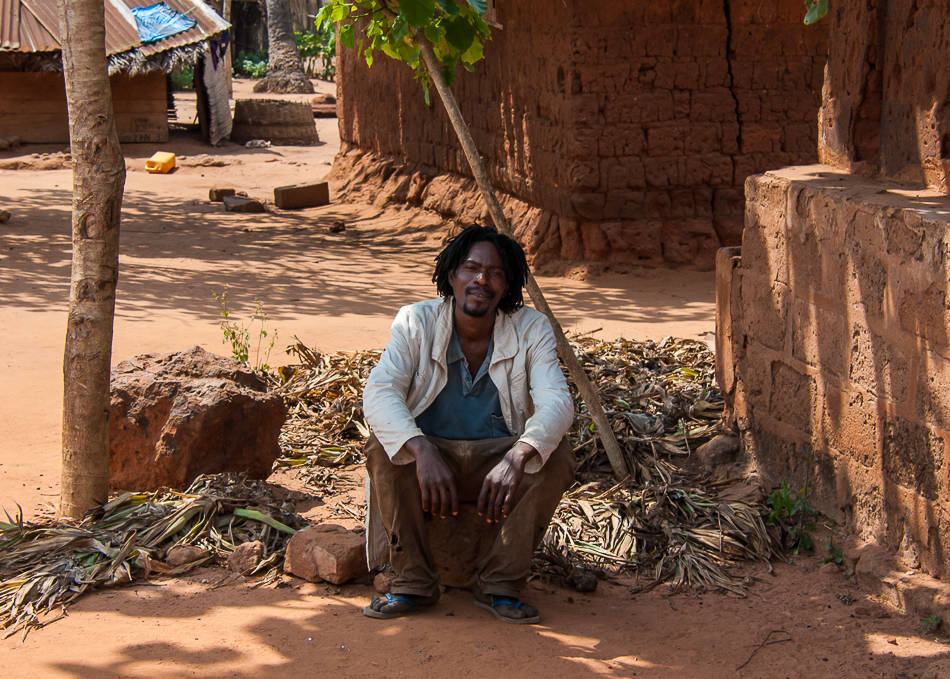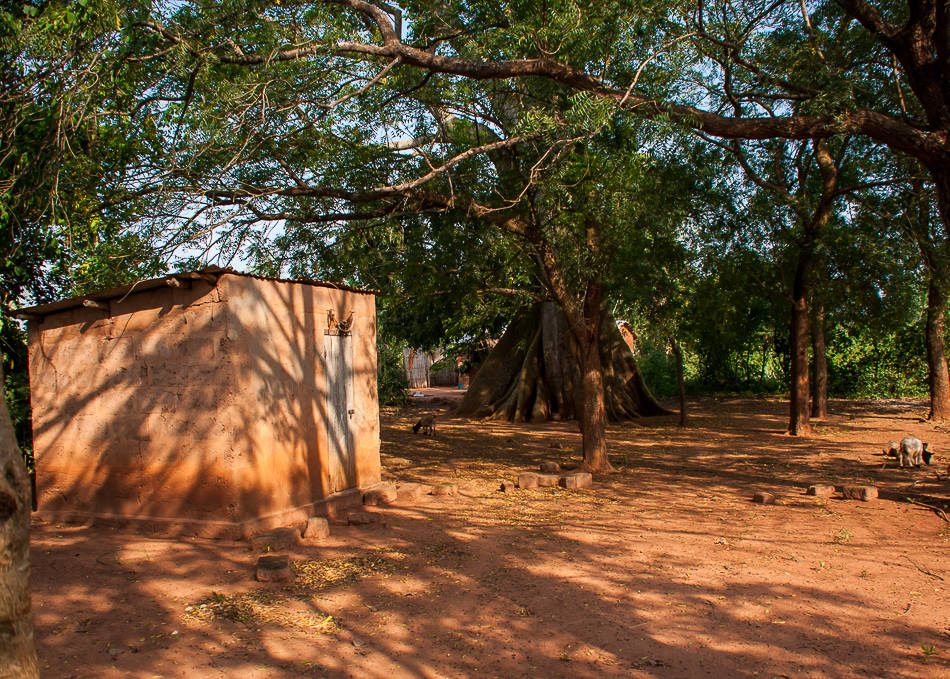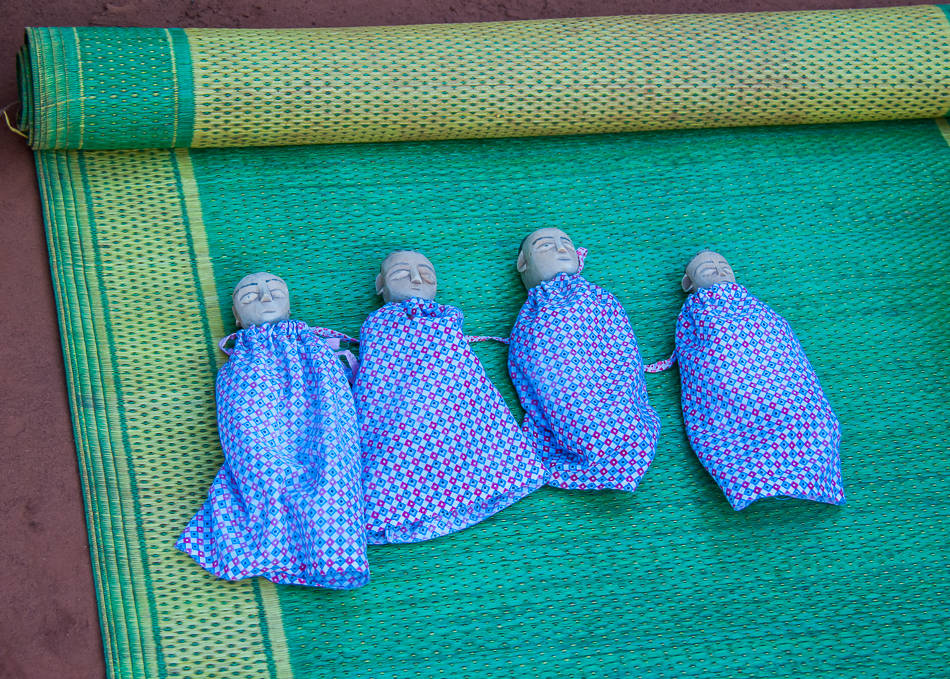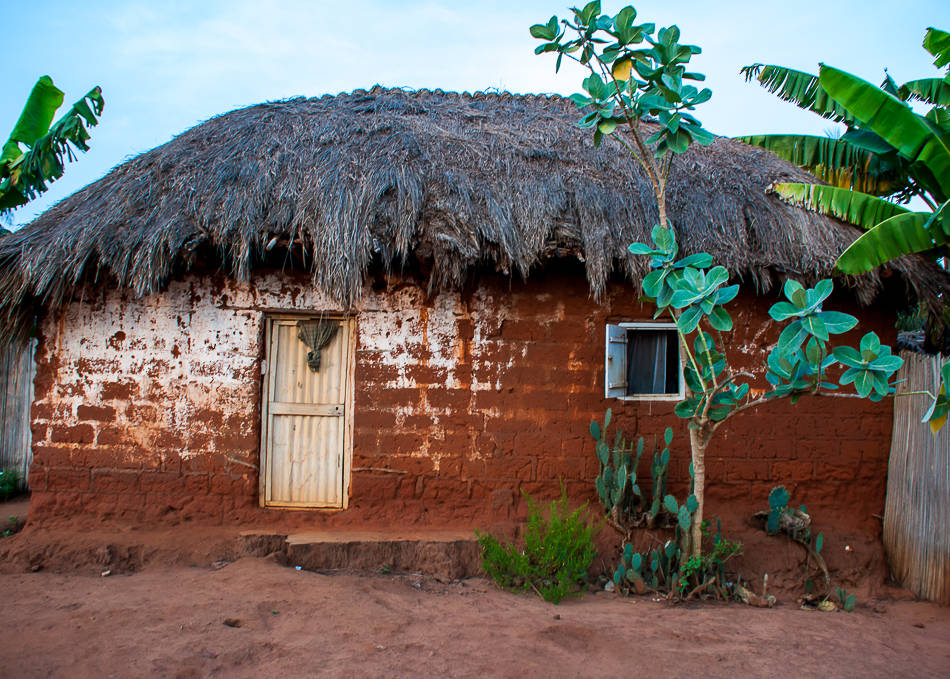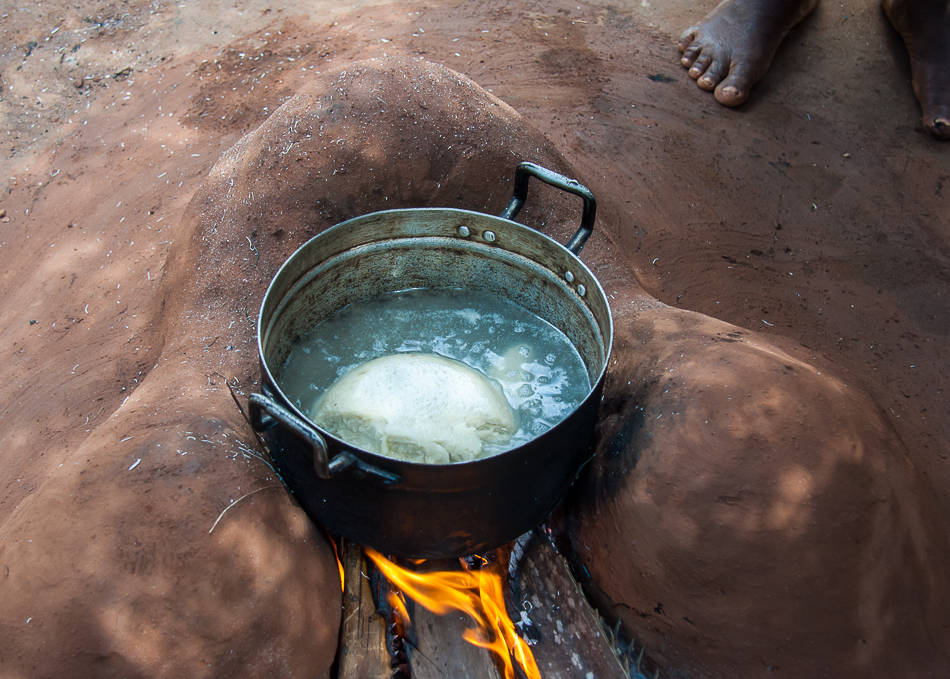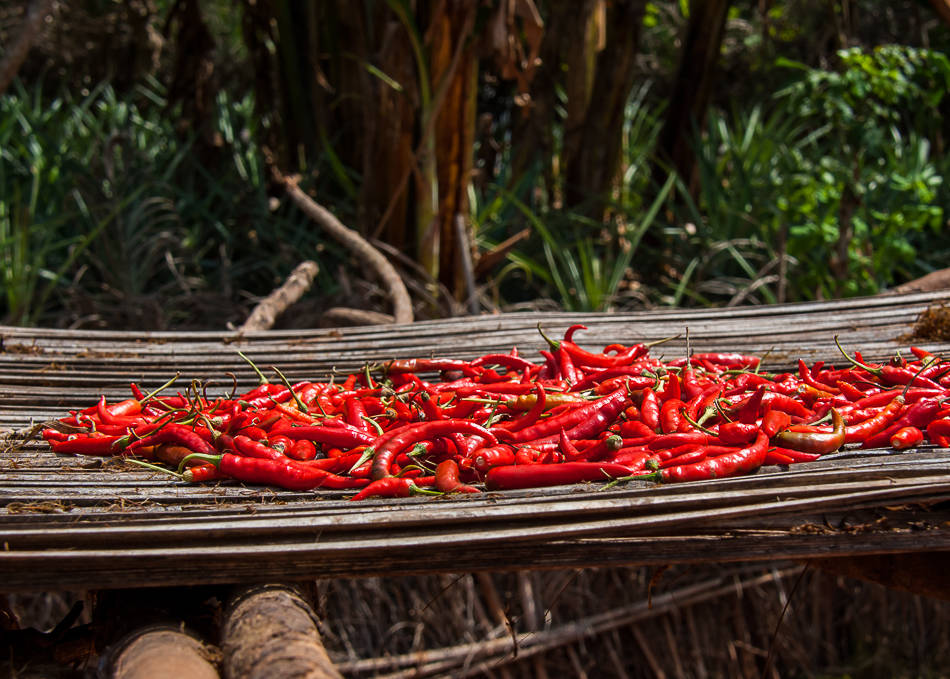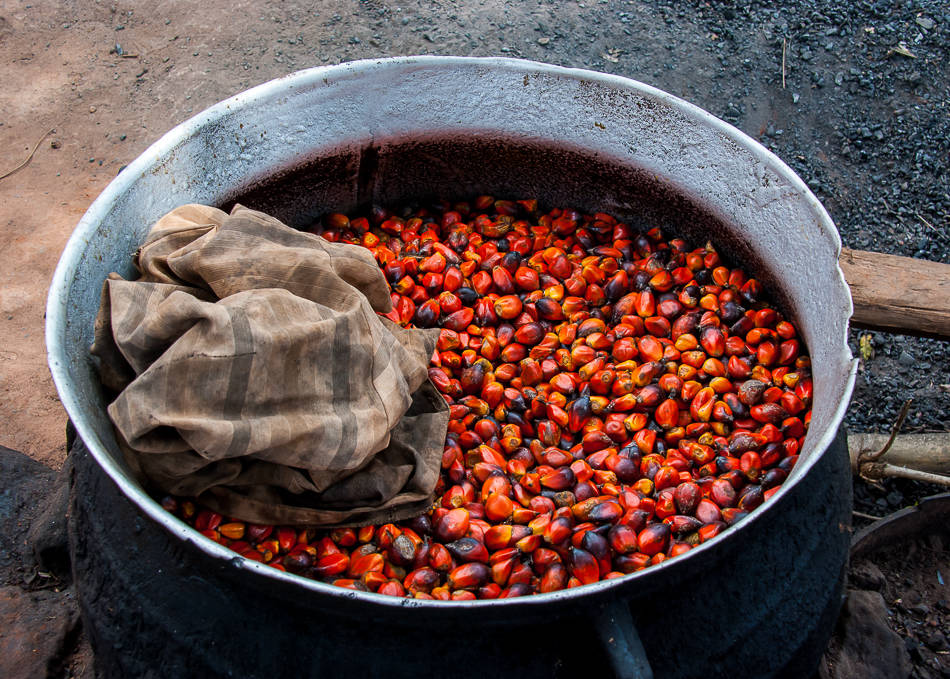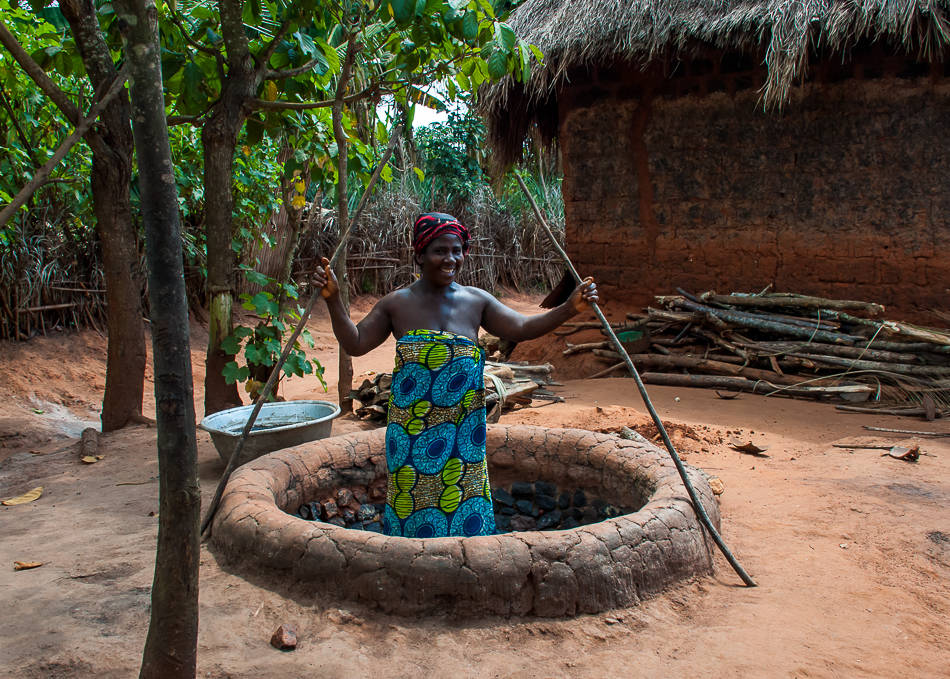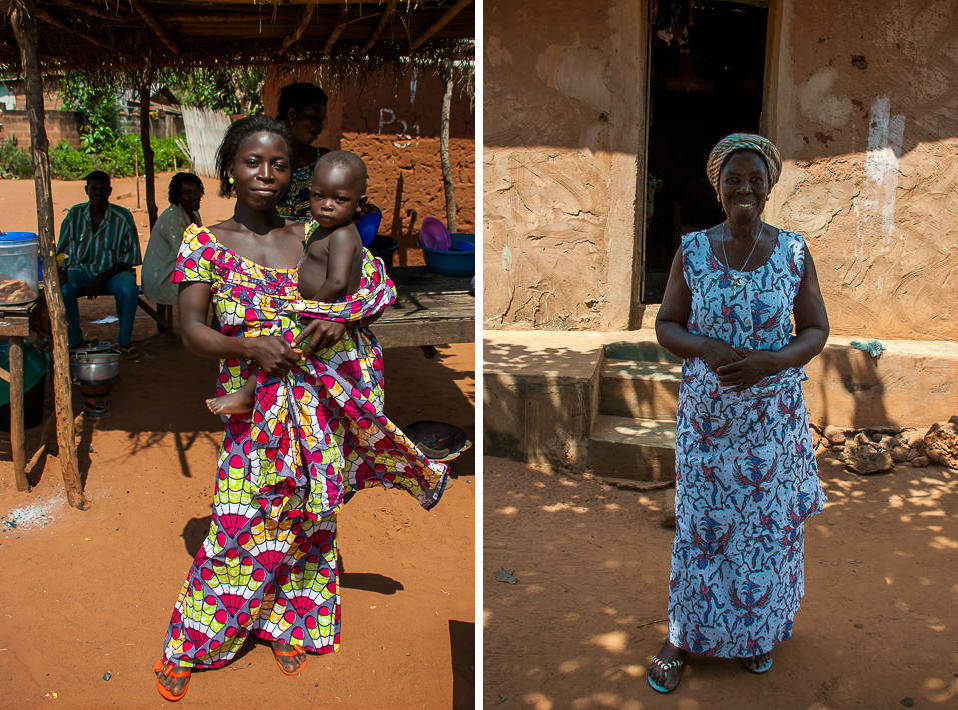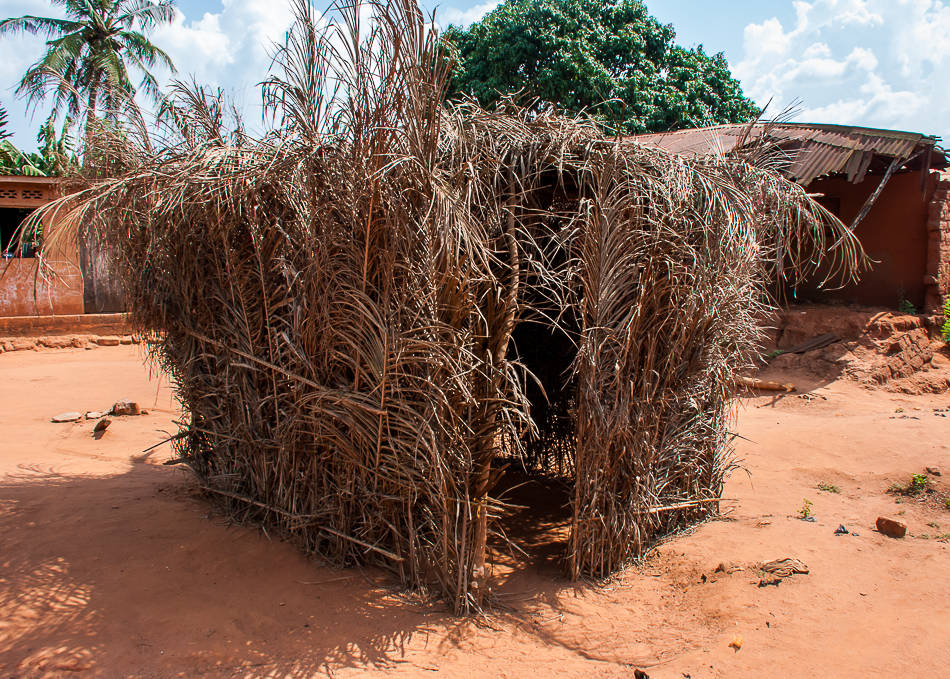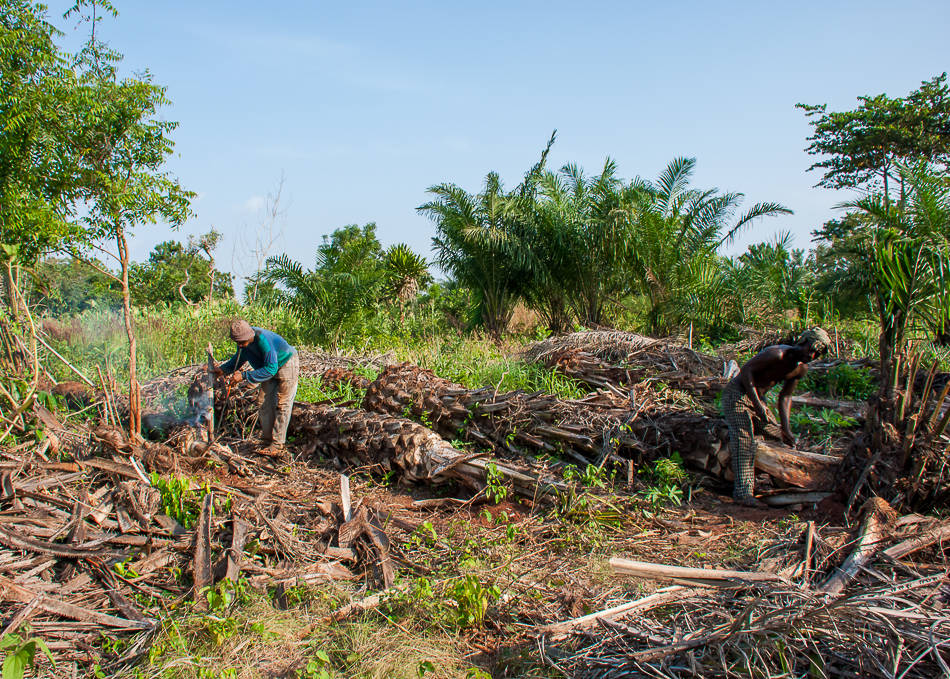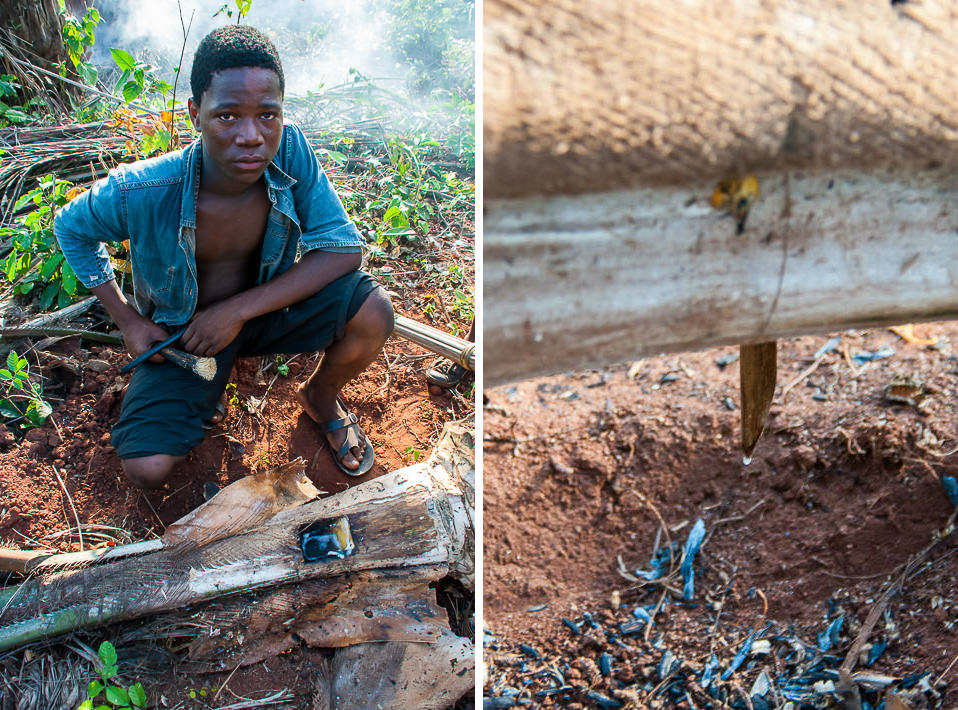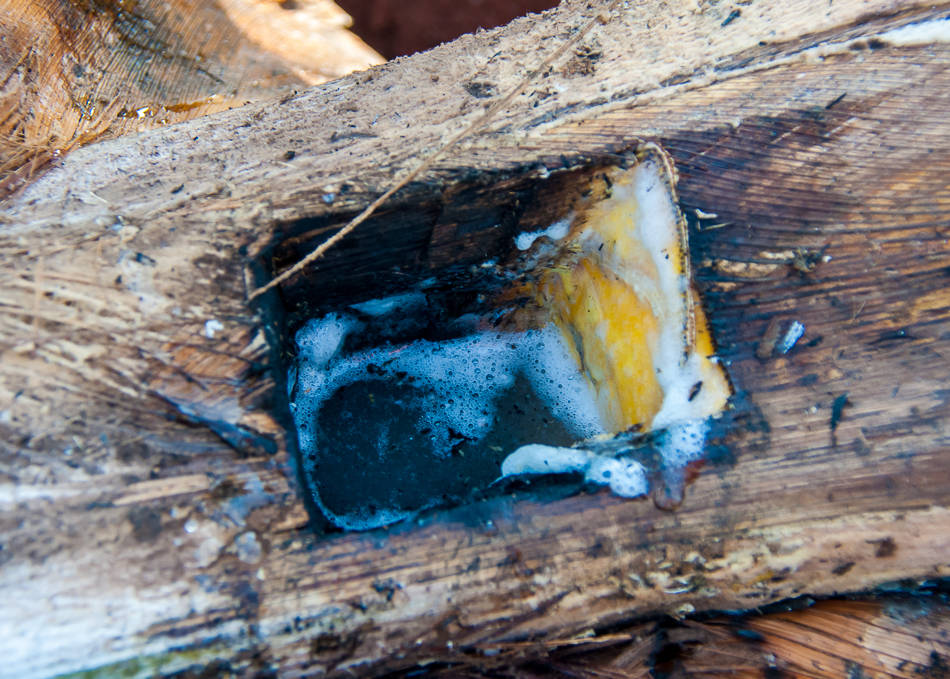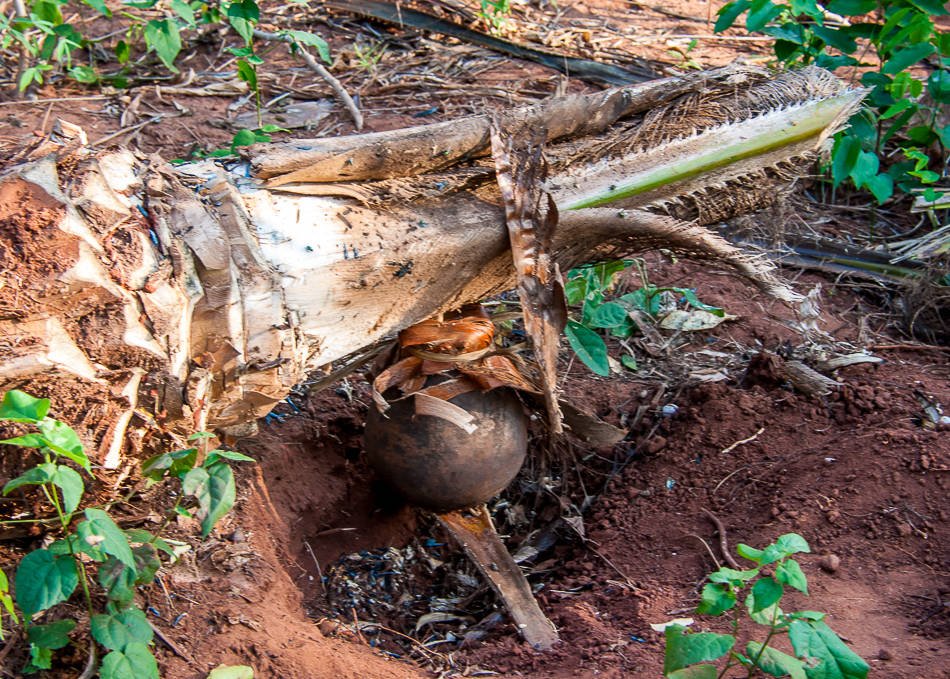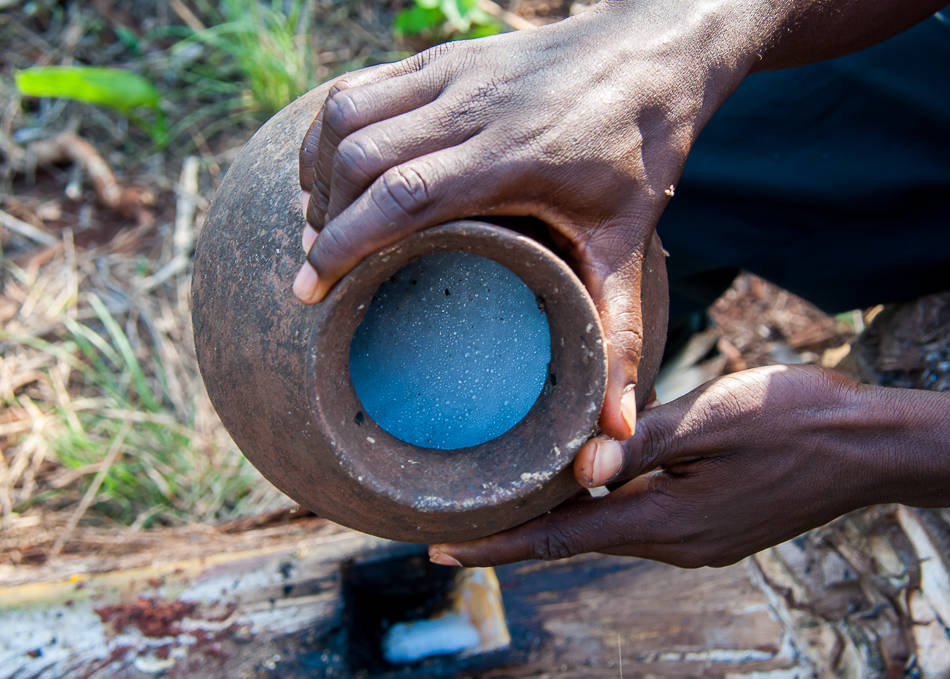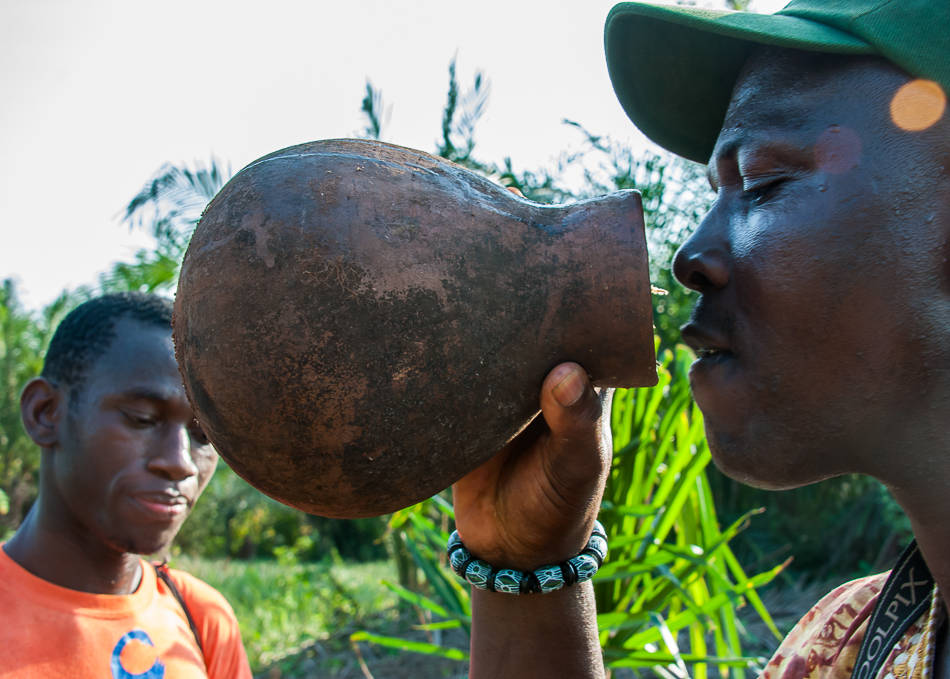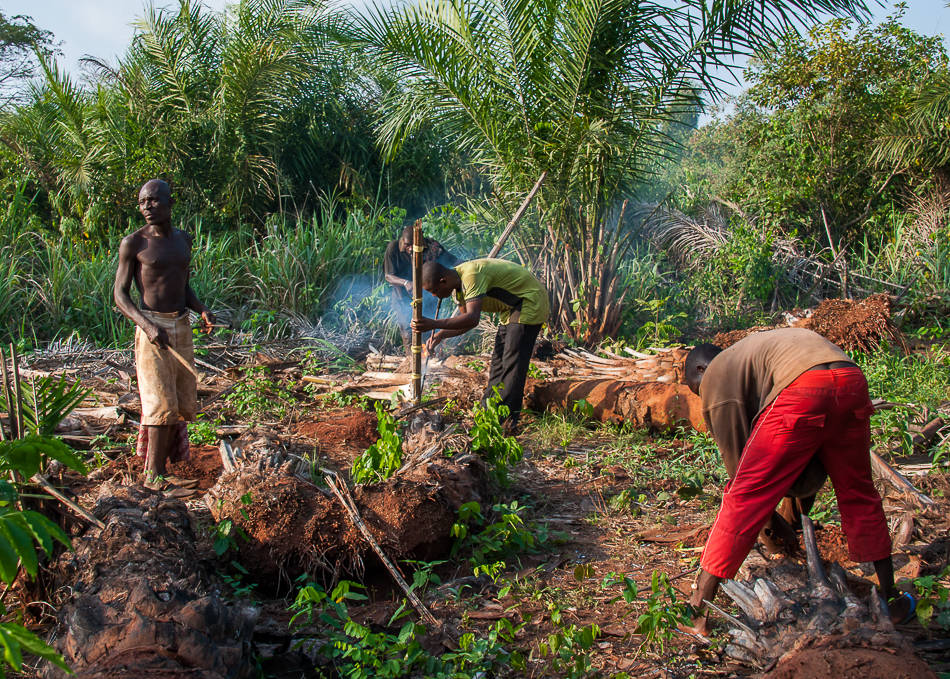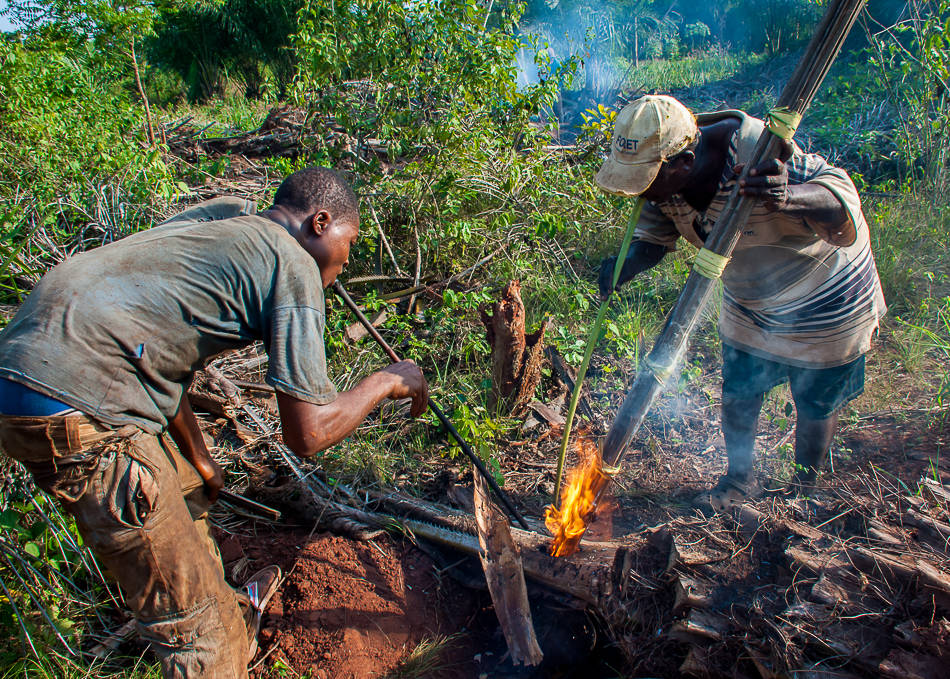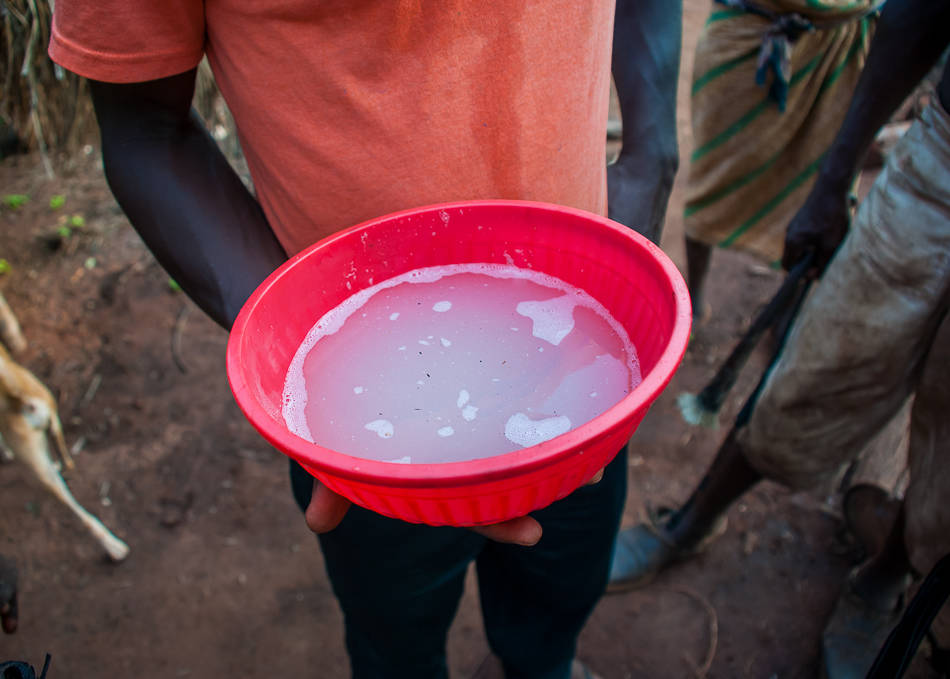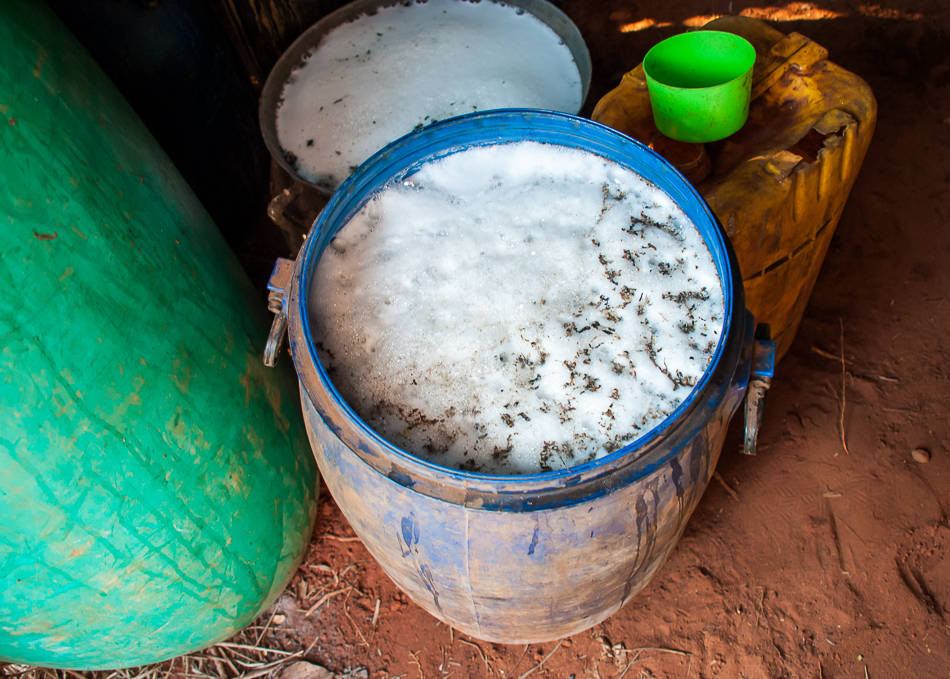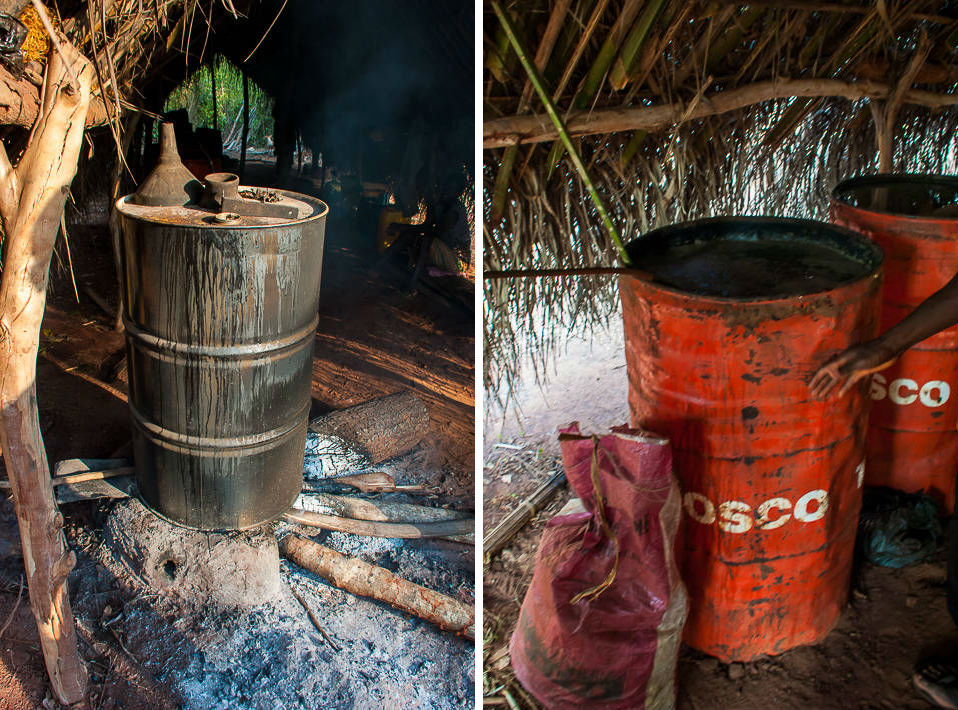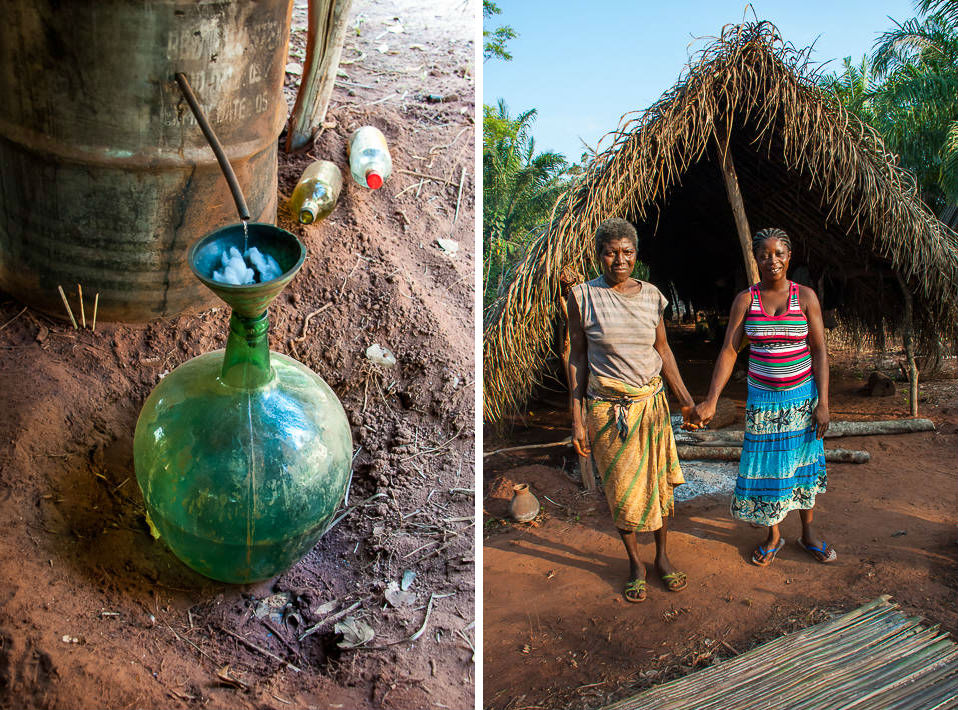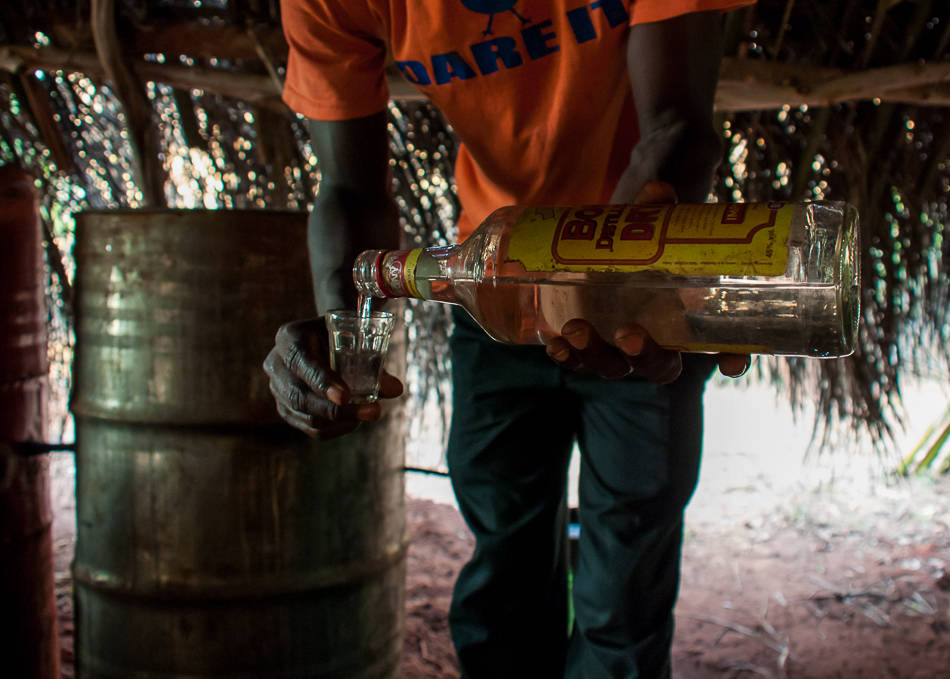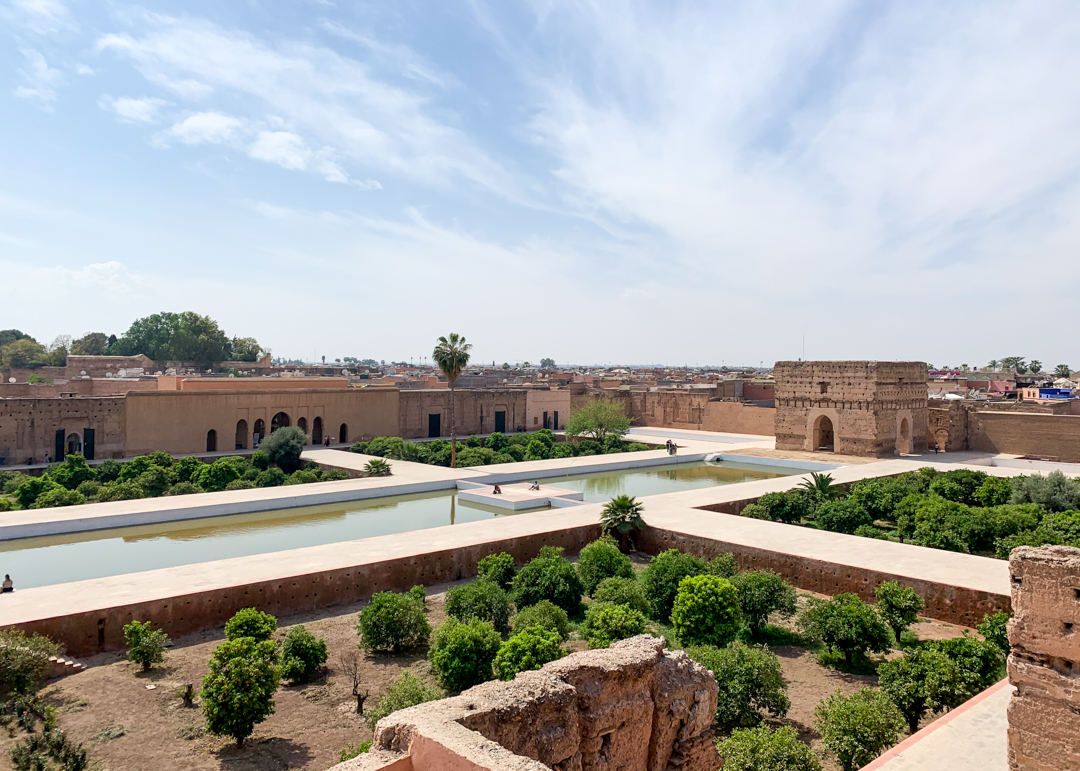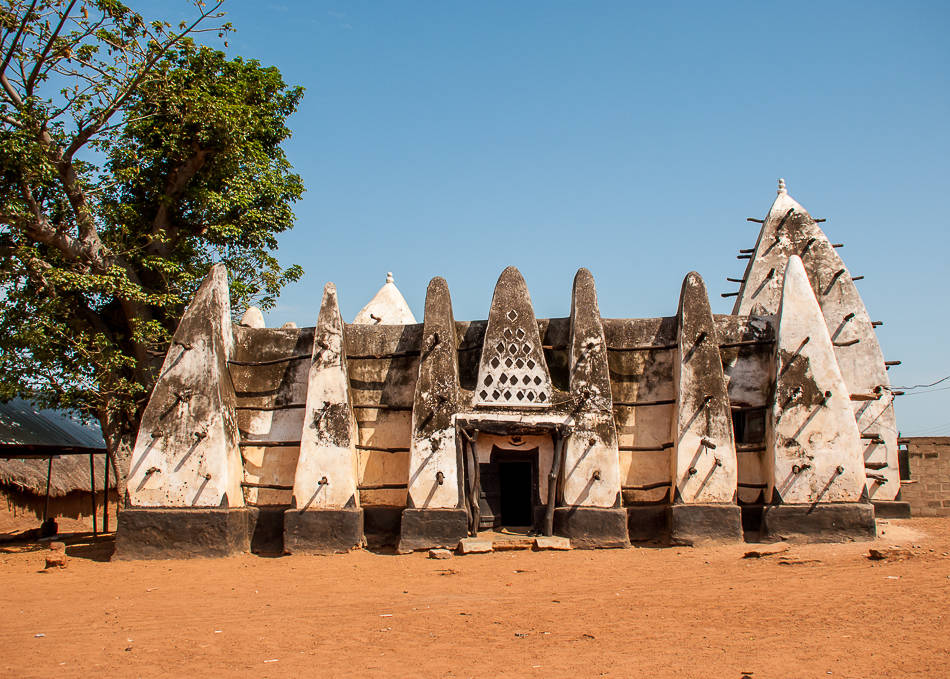Living like a local will always be the best way to discover a destination and I had one of the most engaging visit in the village of Davedi in Togo. I got to experience real rural African village life and feel part of the population for a day with their new ecotourism project.
They recently finished construction of their Pineapple Village Lodge, a modest accommodation where you can spend the night and live like the locals (i.e. if you don’t mind the heat and the random visiting insects and animals…).
Isaac and Valentin are both from the village and incredible guides to introduce you to their daily lives and large families.
The small village lies about 60 km north of the capital Lome and survives on pineapple farming and the production of palm wine and local gin.
Pineapple farms abound in various stages of growth.
Two kinds of pineapple are grown here: the white pineapple (left) which is rounder and milder and the black pineapple (right) with a skinnier frame and sweeter flesh.
Baby pineapples are easily spotted with their bright pink leaves and purple flowers.
Mature pineapples are packed and sold on the street or sent to other villages and towns.
Women sell snacks such as peanuts and groceries on the main road.
Yams are a big staple of Togolese cuisine and I got quite fond of fried yams.
Boiled yams are often the main component of a meal here, served with a vegetable stew or sauce (here tomato and eggs).
Another main staple is banku, the fermented corn dough that I first encountered in Ghana.
Sugarcane is widely available, cheap, and makes for a very pleasant midday snack when the heat is just too much.
Once ridden of their though exterior, the sugarcane sticks are chewed on, releasing a lot of sweet juice before you spit out the leftover stringy bits – highly addictive.
A walk around the village reveals multiple compounds i.e. groups of houses built together. In Western Africa, polygamy is still very much alive and below is where Valentin lives along with his father’s four wives and many kids.
Extended family such as aunts and cousins live right next door and the whole family shares meals and chores in the common courtyard.
Despite its diminutive size, the village still provides the basic services such as a primary school and the ubiquitous hair salon.
Locals playing a game of mancala – it is Saturday and they will play for hours…
Voodoo is widely practiced in Togo and every village has its fetish priest, house, and often tree (seen in the background) for ceremonies and also for locals to come and consult.
All over Western Africa, the birth of twins is rare and considered sacred – they are seen as gods. When a twin dies, the fetish priest will produce a fetish twin doll for the mother who’ll take care of it (i.e. feed, bathe, dress, etc.) all her life and pass it on to her children for generations to come.
Cactus are often used as a deterrent to people who’d want to venture a little too close to the house…
As there is no way of preserving food, here you see leftover banku being boiled to be served again.
Peppers are used in every dish and are usually dried before being crushed and added to sauces and stews.
The red palm fruit is harvested to produce red palm oil, another staple of Western African cuisine.
The fruits are crushed using a traditional technique of stamping with the feet, similar to the way they used to make wine back in the day. Virgin red palm oil has recently earned a healthy reputation and is being praised by nutritionists worldwide.
Village meetings or informal gatherings always happen underneath a big tree to avoid the harsh sun rays.
An elder watching the meeting from her doorstep
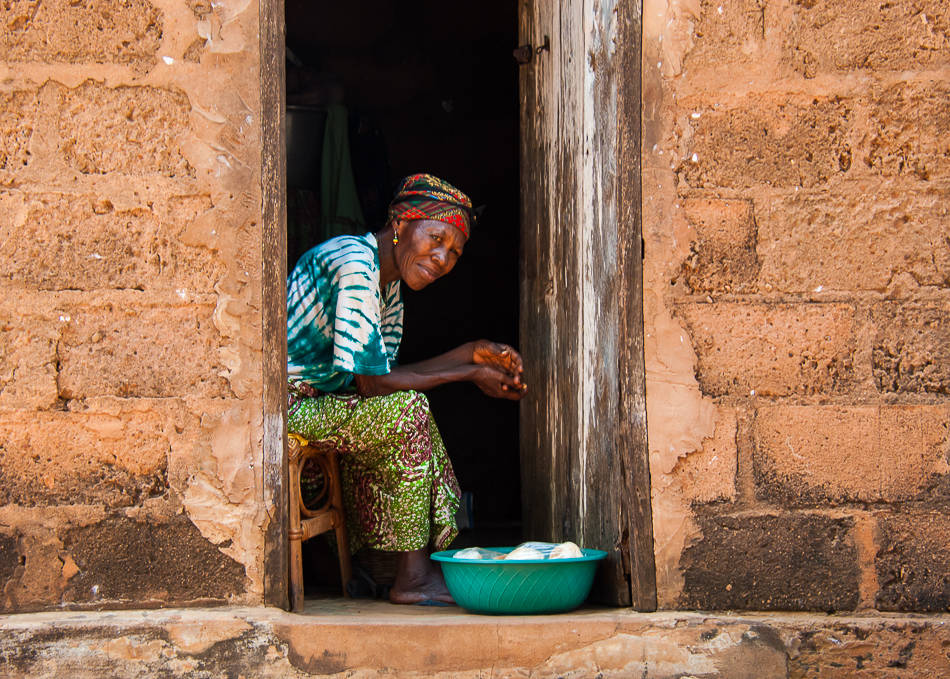
Women’s attires are always beautiful, made of the local and very colorful wax-print fabric.
So cute I almost wish I could have packed him in my bags…
Kids build these temporary playhouses for Christmas time, a tradition that goes way back.
One of the main sources of income in the village is the production of palm wine, an important alcoholic beverage in West Africa produced from sugary palm saps.
The sap is collected by cutting off a hole in the trunk of the felled palm tree and letting the juice drip underneath into a gourd. Tapping palm trees is a skilled art as the tapper needs to know the exact spot to make the incision as well as the ideal depth.
The white liquid that initially collect tends to be very sweet and non-alcoholic before it is fermented. Very soon, the fermentation begins and creates a lot of bubbling and foaming from the gourd, producing alcohol.
Tasting is encouraged (!) and the still warm juice is a delight to quench your thirst when working in the field.
Sap from a tree will flow for about 2-3 weeks and wine tappers work daily to encourage the flow and ensure the quality of the sap – a back-breaking and very sweaty job.
They break the day with a little singing and dancing (unless it was just to show me off! ;-)) Click on the video for a little taste:
After scraping the hole with a knife or machete, a fire is lit and blown into the hole to facilitate the collection of sap. It also gives a pleasant smokey taste to the resulting palm wine.
Drunk fresh, palm wine contains most of its sugar and tastes really sweet…in a good way.
Fermentation starts soon after the sap is collected and within an hour or two becomes reasonably high in alcohol (up to 4%) which makes palm wine’ shelf life extremely short. It needs to be consumed within 24 hours or it will start turning into vinegar.
Leftover palm wine can also be distilled to create a stronger drink – the local akpeteshie. First fermented in large barrels, it is then boiled to pass the resulting vapor through a copper pipe within cooling barrels…
… where it condenses and drips into sieved jars, then undergoing a second stage of fermentation.
The resulting spirit is between 40% and 50% and we got to enjoy it with the tappers coming back from the fields at the end of a long day…cheers!

